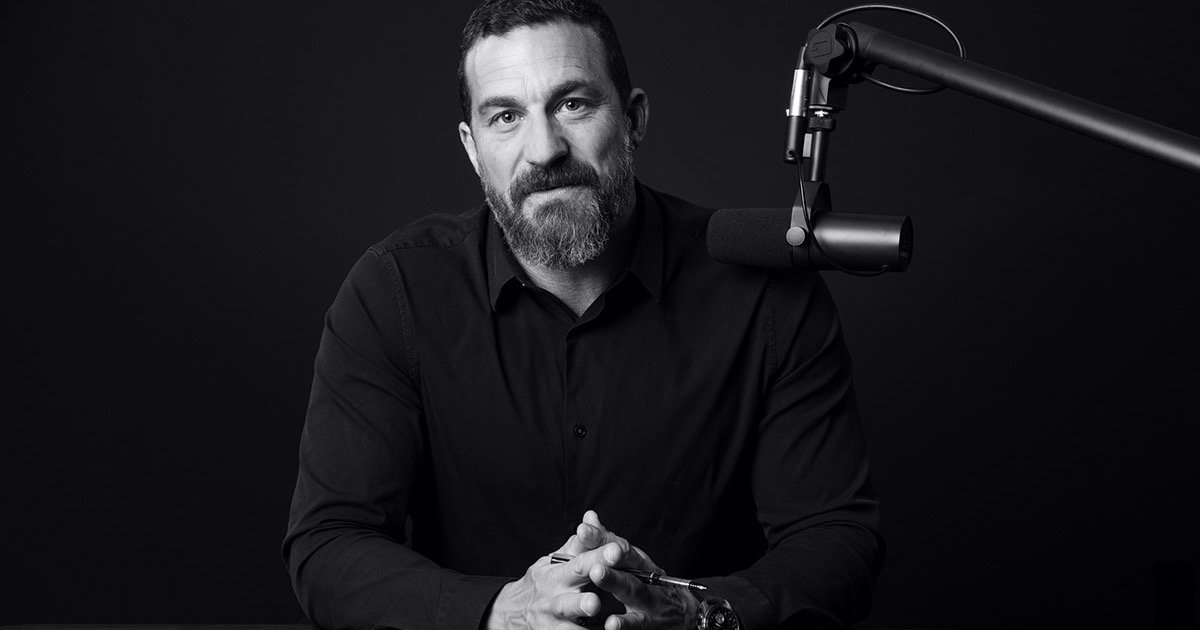Andrew Huberman’s morning routine—12 protocols for peak performance.
We explore Dr. Andrew Huberman’s morning routine, a science-backed sequence designed to amplify your cognitive performance and overall wellness.
The Stanford neurobiology professor and Huberman Lab founder incorporates simple yet powerful morning habits, such as getting natural light first-thing and adding a daily dose of AG1 to kickstart his day—discover how these intuitive tweaks can optimize your own routine.
Wake up naturally
Huberman wakes up without an alarm, aligning with his circadian rhythm for optimal energy.00:09:26
To gain a better understanding of your body’s natural rhythms, track your wake-up time. This can help you identify your ‘temperature minimum’—the lowest body temperature in a 24-hour cycle—which is essential for quality sleep and aligning your wake-up time for optimal energy throughout the day.
For a smoother, more natural wake-up, try a light alarm clock that mimics sunrise and helps ease you into your morning routine.
Morning sunlight exposure
Huberman spends 2-10 minutes outside in natural sunlight to set his internal clock, reduce amygdala activation, and foster calmness.00:16:19
Morning sunlight exposure helps regulate cortisol levels and supports circadian alignment. Even on cloudy days, natural light provides more benefits than indoor lighting.
If cloudy mornings are common where you live, you might consider a 10,000-lux LED adjustable lamp.
Czeisler et al. in Models of the Effects of Light on the Human Circadian System (Journal of Biological Rhythms, 1981).
Supplements and electrolytes
Within the first hour of waking, Huberman hydrates with two glasses of water, adding AG1 by Athletic Greens and LMNT electrolytes to boost nutrient intake and hydration.00:27:18
Morning hydration with electrolytes supports neural activity and mental performance.
Consider AG1 and LMNT electrolytes for daily nourishment.
See a comprehensive list of Huberman’s supplements here
Sawka et al. discuss the impact of electrolytes on cognitive function in Fluid and Electrolyte Balance in Human Performance (Medicine & Science in Sports & Exercise, 2007).
Cold exposure
Huberman occasionally uses cold plunges or showers to boost alertness and resilience as part of his morning routine, enhancing mood and stress response.01:06:31
If you’re new to cold exposure, start with cold water rinses and gradually increase duration.
For sports recovery, try cold water immersion around 50°F to reduce muscle soreness and enhance immunity.
Tipton’s Cold Exposure and Exercise: Effects on Autonomic and Cardiovascular Function (Autonomic Neuroscience, 2014) supports these benefits.
Delayed caffeine intake
Huberman waits 90-120 minutes post-wake to avoid early adenosine blocking, which can lead to an afternoon energy slump.00:28:23
Choose a smooth caffeine source like yerba mate for sustained energy. Huberman’s preferred yerba mate is Anna Park.
For a smoother, more natural wake-up, try a light alarm clock that mimics sunrise and helps ease you into your morning.
Drake et al. discuss caffeine timing in Caffeine Effects on Sleep Taken 0, 3, or 6 Hours before Going to Bed (Journal of Clinical Sleep Medicine, 2013).
Intermittent fasting
Huberman fasts until late morning, consuming his first meal around noon and drinking teas like yerba mate, which support metabolism and mental clarity.00:31:03
Fasting can improve mental clarity by increasing adrenaline levels.
Yerba mate and GLP-1-stimulating teas can enhance fasting benefits.
Patterson et al. review intermittent fasting benefits in Intermittent Fasting and Human Metabolic Health (Journal of the Academy of Nutrition and Dietetics, 2015).
Focused 90min work blocks
Huberman structures his work in 90-minute intervals, and incorporates ergonomic adjustments like screen height and lighting for improved focus.00:41:23
He completes another 90-minute work session in the afternoon after a Yoga Nidra break, promoting sustained productivity through structured focus blocks.
Use noise-canceling headphones to limit distractions, and set screens slightly above eye level to enhance alertness.
Strength training
Huberman dedicates around 60 minutes to strength training and cardio, using creatine and whey protein to aid muscle recovery.01:03:25
Choose a grass-fed whey protein isolate with added enzymes to support digestion—perfect for optimizing muscle recovery and overall wellness after workouts.
Fox discusses physical activity’s impact on cognitive and emotional health in The Influence of Physical Activity on Mental Well-Being (Public Health Nutrition, 1999).
Yoga Nidra/Non-Sleep Deep Rest (NSDR)
While not technically part of Andrew Huberman’s morning routine, he uses Yoga Nidra in the afternoon for relaxation and dopamine replenishment. Guided Yoga Nidra sessions via apps can provide similar restorative benefits.01:30:04
Saraswati’s Yoga Nidra: A Meditative Practice for Relaxation and Health (International Journal of Yoga Therapy, 2009) outlines Yoga Nidra’s benefits.
Evening sunlight exposure
Huberman spends 10-30 minutes outdoors in the late afternoon or early evening to support circadian alignment.02:00:20
Evening sunlight or a light therapy lamp can help boost mood and regulate sleep.
Consider a light therapy lamp with adjustable brightness for those unable to achieve evening sunlight exposure.
Blue light blocking wind-down
Huberman dims indoor lighting and uses blue light-blocking glasses to reduce artificial light exposure.00:25:22
Blue light-blocking glasses help alleviate eye fatigue from electronic device exposure, promoting a natural wind-down and supporting deep rest.
Chang et al. show the impact of blue light on sleep in Evening Use of Light-Emitting eReaders Negatively Affects Sleep, Circadian Timing, and Next-Morning Alertness (PNAS, 2015).
Consistent sleep routine (10pm)
Huberman maintains a consistent bedtime, around 10 PM, for optimal sleep quality.02:01:19
A timed white noise machine with soothing sound therapy options can help you unwind and optimize your sleep environment.
Phillips et al. explore the impact of sleep timing on health in The Importance of Sleep Regularity (Sleep, 2017).

